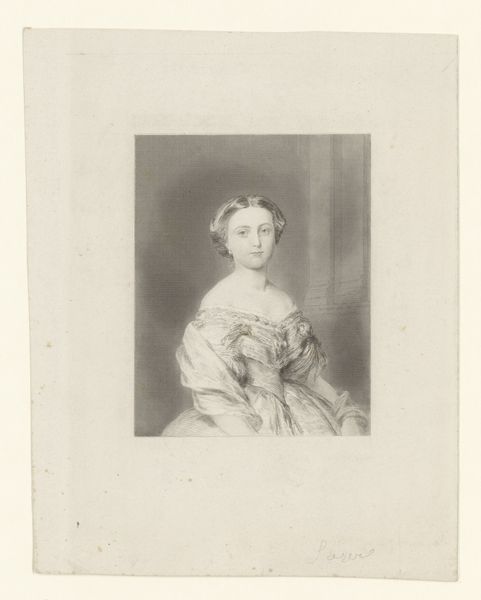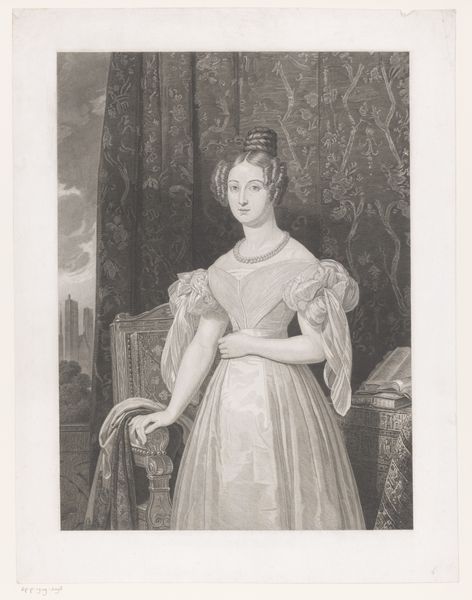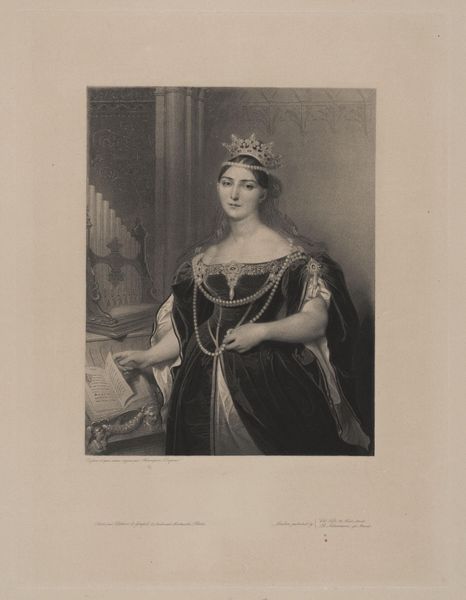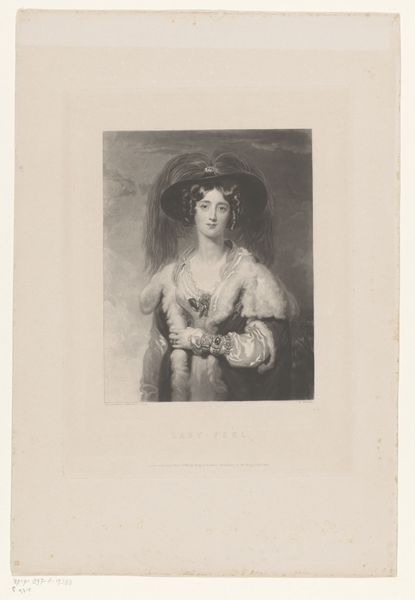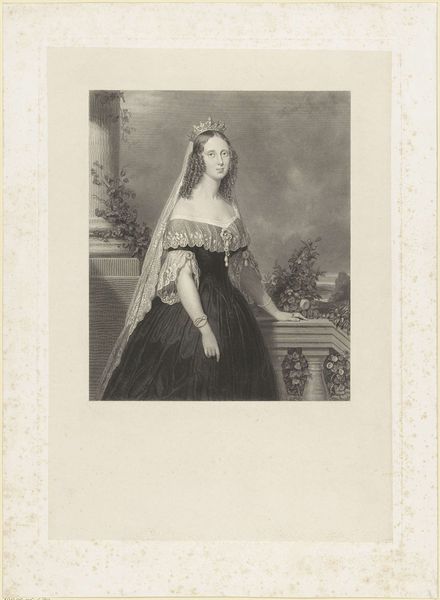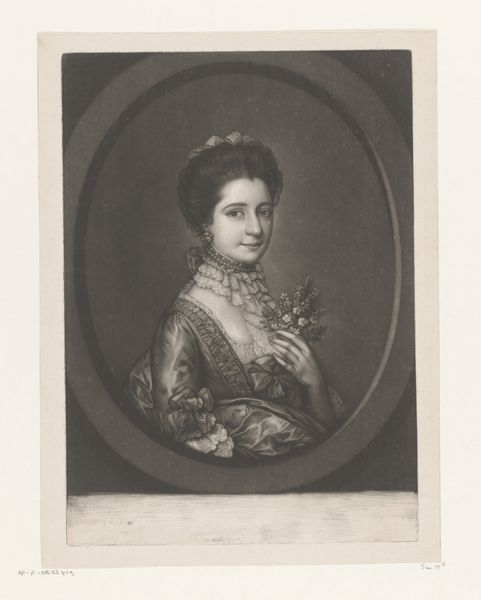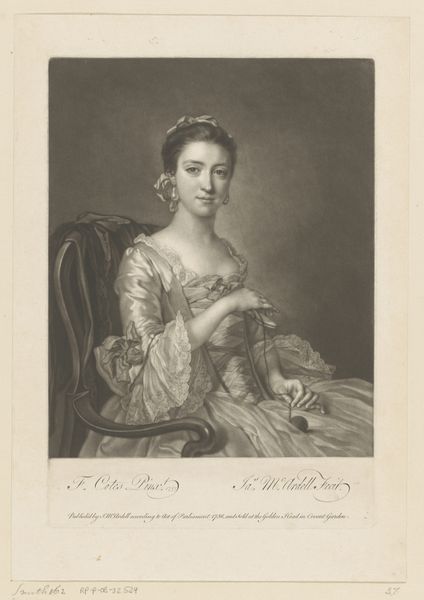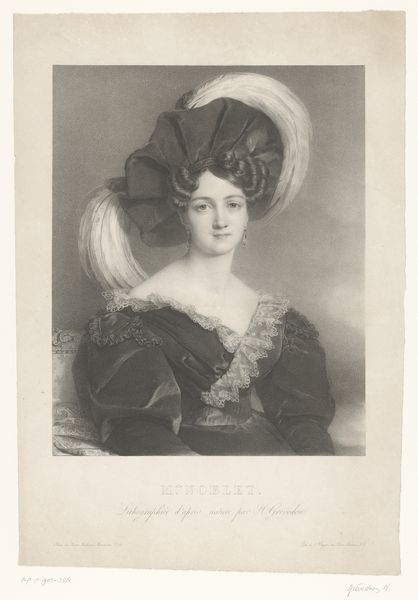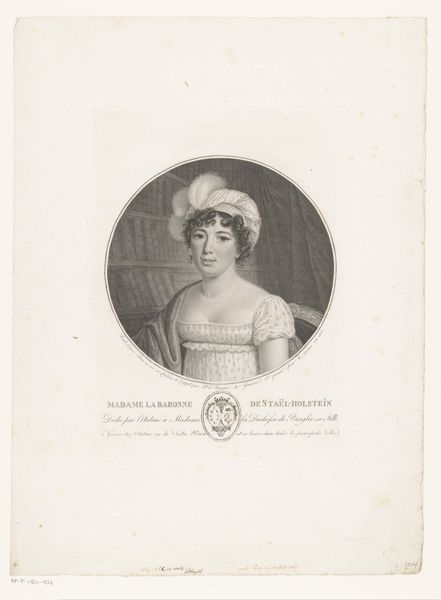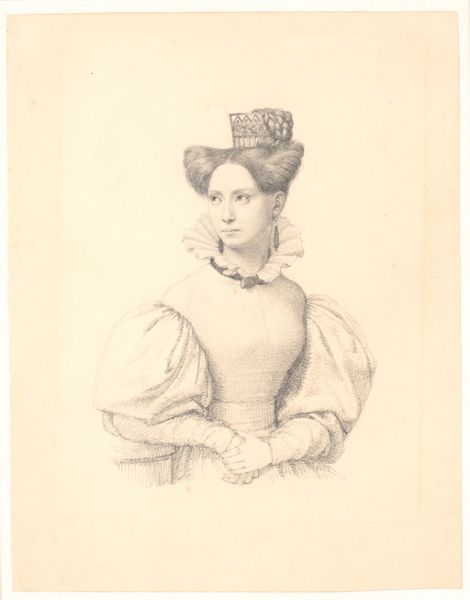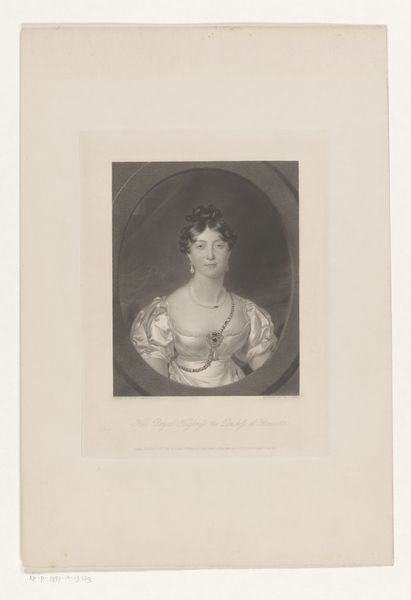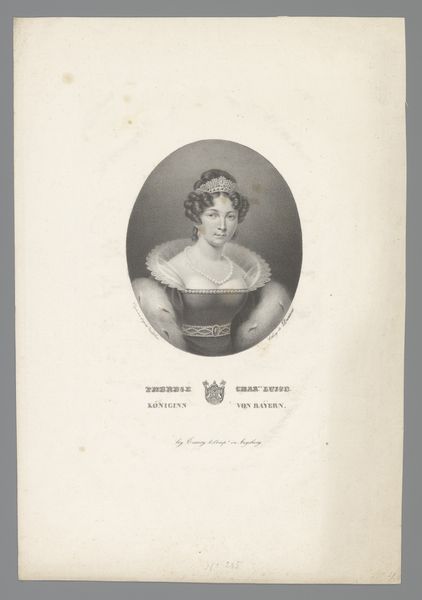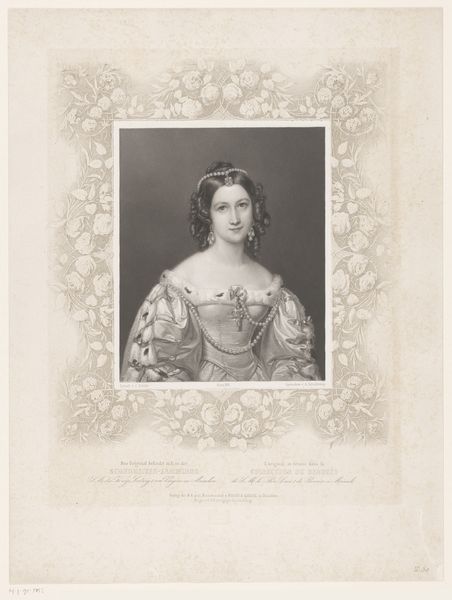
Portret van Augusta van Hessen-Kassel, hertogin van Cambridge 1818 - 1846
0:00
0:00
print, engraving
#
portrait
#
neoclacissism
# print
#
engraving
#
realism
Dimensions: height 150 mm, width 109 mm
Copyright: Rijks Museum: Open Domain
Curator: Here we have a print housed here at the Rijksmuseum: a portrait of Augusta van Hessen-Kassel, Duchess of Cambridge. It was made sometime between 1818 and 1846. Editor: It’s striking how…crisp the rendering is, even though it’s a print. There's such attention paid to the details of her garments and jewelry. You can almost feel the weight of those pearls. Curator: Absolutely. This work aligns with the neoclassical sensibilities of the era. Observe the subtle yet deliberate way she is posed. What strikes me is the limited power she could wield. Despite the grand attire, it makes one question female roles in society at the time, constrained by societal expectations, with marital status and lineage being so integral. Editor: Right. I see what you're saying. And in an artwork such as this, the process is particularly noteworthy, the labor intensive etching and engraving to render details with this clarity on what I assume is paper...it represents the production chain required, from artist to patron. Curator: The fashion depicted is indicative of her class. A portrait was a status symbol, an object. To dress and to pose like this communicated social and political meanings of power. In a sense, Augusta performs her role as a member of royalty through this very image. Editor: And given it’s a print, multiple copies could be distributed – multiplying those statements, replicating the status. It speaks to consumption, doesn't it? Like a nineteenth-century version of circulating images in media. Curator: Precisely. Images like these perpetuated power structures, didn't they? So, to see this portrait now, one can explore the intersections of gender, class, and political power that such imagery actively shaped and maintained. Editor: The way it allows this dissemination really challenges a traditional reading, as opposed to original painting, the mechanics are intrinsically embedded. Curator: It highlights how artistic production reflects and shapes society. Editor: It really gives a renewed understanding of the material reality of image circulation at the time.
Comments
No comments
Be the first to comment and join the conversation on the ultimate creative platform.
